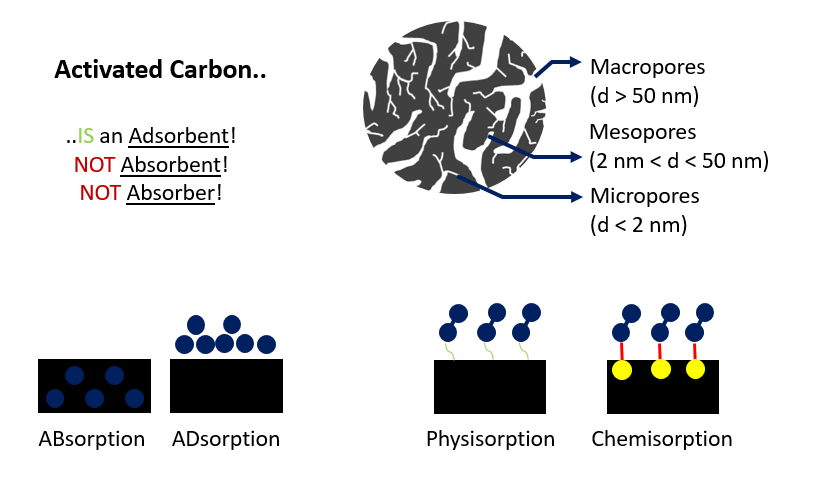Manufacturer and Connoisseur of Activated Carbon
-
Call Us Today
(+91) 9173450327
-
Customer Helpdesk
24*7 Online
-
Headquarters
Vadodara

So, what is activated carbon, really?
So first things first: What is Activated Charcoal?
It is a simple carbon-based material with a complex pore structure. It can be produced from carbon-rich materials such as coconut shells, wood, coal, etc., and further processed to get the highly porous structure.
Activated charcoal is widely used as an “Adsorbent”, not an absorbent or an absorber! Now, what’s the difference you ask? Remember the class 6th Science experiment? Imagine a piece of chalk dipped in ink. You would find the outer surface of the chalk blue. But if you break the chalk, you would find the inside of the chalk completely white!
In a nutshell, in adsorption, the molecules are attached to just the surface, while in absorption, the molecules enter the bulk of the material. Other examples of adsorbents include zeolites, alumina, silica gel, and so on.
Talking of adsorption, it is of two types – Physical and Chemical. In physical adsorption, the molecules are attached to the surface of the adsorbent through weak forces called the Van Der Waal’s Force. While in chemical adsorption, the molecules are attached by the formation of chemical bonds. Depending on the application, any of the above two adsorptions can occur. Too much chemistry to digest, right?
Adsorption is a very common process that is used in the industry. The most common example of chemical adsorption these days is mercury adsorption. Because of increasingly stringent environmental regulations, it is required to achieve a very low concentration of mercury before the gas or liquid stream can be released into the environment. Considering the factors such as time, money, efficiency, and so on, it has been determined that it is better to do chemical adsorption for mercury using sulfur impregnations in the activated carbon.
Now one must wonder, where exactly does adsorption occur? Though we mentioned it is a surface phenomenon, but where exactly do the molecules get attached?
Adsorption occurs in the pores of the substance. Activated charcoal is a highly porous material. It has pores of different diameters. The pore diameters> 50 nm are called macropores and the ones less than 50nm are micropores. Pore diameters between the macro and micropore diameters are called mesopores. A pore size distribution gives the percentage of micropores, the percentage of macropores and mesopores.
It is the pore size distribution that determines which grade of activated carbon would be suitable for a particular application. Let me explain it using an example. Let’s say you and I go to a children’s play park. There you would find a small slide through which only kids can pass. If we try to enter it, we would be stuck. Similarly, it is important to know what is the size of molecules of the impurities that we are required to adsorb or remove using activated carbon. Then accordingly we select a grade of activated carbon with the most optimum pore size distribution. Of course, it’s not as simple as it sounds but that’s the basic idea behind it.
As I have previously mentioned that activated charcoal is made from various carbon-rich sources. Now depending on the type of raw material used and on the activation method, the pore size distribution will vary for the resulting activated carbon. In general, it is said that coconut-based activated carbon has a predominantly microporous pore structure. Whereas, wood-based carbon has a predominantly macroporous structure. Coal is somewhere in between but again it depends on the type of coal used.
Throughout this article, we have praised the highly porous structure of Activated charcoal. But why does it matter? A high porous structure provides high surface area or in other words, better adsorptive properties. Can you believe that for about 7-8 grams of activated carbon powder in your hand, the surface area would be equivalent to that of a soccer field!
Amazing, right?
-------------------
(Edited and improved by Ms. Hetanxi Singadia)







